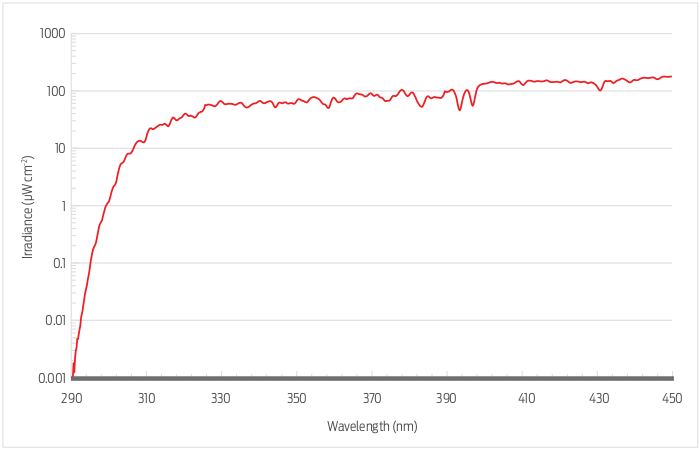BRANZ: Impact of UV on materials
By Nick Marston, BRANZ Materials Team Leader
The durability, performance, and deterioration rate of polymers are influenced by their material composition and climatic conditions. Simply put, due to New Zealand’s high ultraviolet (UV) levels, most commercial organic-based polymers used in construction degrade when exposed to the sun.
We're all aware that New Zealand has high levels of UV and that these can quickly burn our skin if we forget to apply sunblock.
Our absolute UV levels and UV index numbers are, on the face of it, a bit surprising given that similar latitudes on other continents are typically about 20% lower than the UV levels we have here.
The alignment of New Zealand’s latitude with Southern Europe and North America are shown in Figures 1a and 1b.

Figure 1a: Alignment of New Zealand’s latitude with Southern Europe.

Figure 1b: Alignment of New Zealand’s latitude with the US.
Why is our UV high?
There are several possible reasons our UV is high. There are urban myths about the ozone hole and sunshine hours.
However, the main ones are our clean air and the Earth’s orbit, which brings us closer to the Sun in our summer.
These factors mean that summertime UV is higher in New Zealand than at comparative northern hemisphere latitudes. The National Institute of Water and Atmospheric Research (NIWA) has confirmed this by comparing New Zealand UV measures with locations in the US (see Figure at top).
Plastics weathering
High UV levels are bad news for most plastics and coatings. The polymer molecules absorb the UV, and it triggers chemical reactions. Different plastics have different chemical structures so no two behave quite the same. Some, like acrylic (PMMA), absorb low wave-length UV and are relatively unaffected as there is little short wavelength UV at the Earth’s surface and the energy of the light is lower.
Others, like polypropylene (PP), absorb at higher UV wavelengths than our skin. They can be degraded quickly if they’re not formulated correctly as the UV intensity is greater at the higher wavelengths and the light has more energy, doing more damage.
BRANZ tests
Past research by BRANZ has confirmed these ideas that plastic building products are affected by sunlight because of:
the nature of their chemical composition
the impurities they contain
the effects of high-temperature injection moulding and extrusion processes involved in producing them.
BRANZ has found that these effects are often accompanied by extensive deterioration in the mechanical properties of these materials, such as tensile strength, impact strength and elongation – all important parameters in the performance of a building product.
BRANZ has also tested the relationship between climatic variations, principally controlled by the latitude at which samples were exposed and the rate of degradation for a variety of different plastics. These included low-density polyethylene (PE), PP and unplasticised polyvinylchloride (uPVC) sheets.
Samples have been monitored at exposure sites in Kaitaia, Paraparaumu, BRANZ at Judgeford and Invercargill since 2002.
The programme was expanded in 2005 adding PMMA, polycarbonate (PC), polyester (PET) and glass-filled composite sheets to the existing sites. Additionally, five new exposure sites were established at Cromwell, Christchurch, Westport, Rotorua and Auckland.
The durable outdoor building products black PE, white uPVC and PMMA have exhibited little change in colour or mechanical properties over this extended study. The black PE samples have fine surface micro-cracks, but the bulk of the product remains unaffected because the material contains carbon black, which acts as a UV stabiliser.
The white uPVC samples began to exhibit clear signs of chalking within the first 5 years outdoors. This is characterised by a gradual increase of colour shift, followed by a relatively rapid reduction and results from the onset of surface erosion due to chemical reactions between the PVC matrix and the white titanium dioxide pigments in the sheet. The PMMA remains glossy and clear because, as mentioned above, it has limited interaction with the incident UV light.
Longer-term studies
Overall, the research programme found the expected short-term trends, and samples of the more durable polymeric materials have now been exposed for up to 20 years.
Further work is planned this year to collect black PE, white uPVC, and PMMA samples from the sites across New Zealand. Testing of these is expected to deliver an improvement in the reliability of the understanding of durability for these key plastic materials.
First published June 2021 in build magazine, issue 184.
Date posted: 8 June 2021

